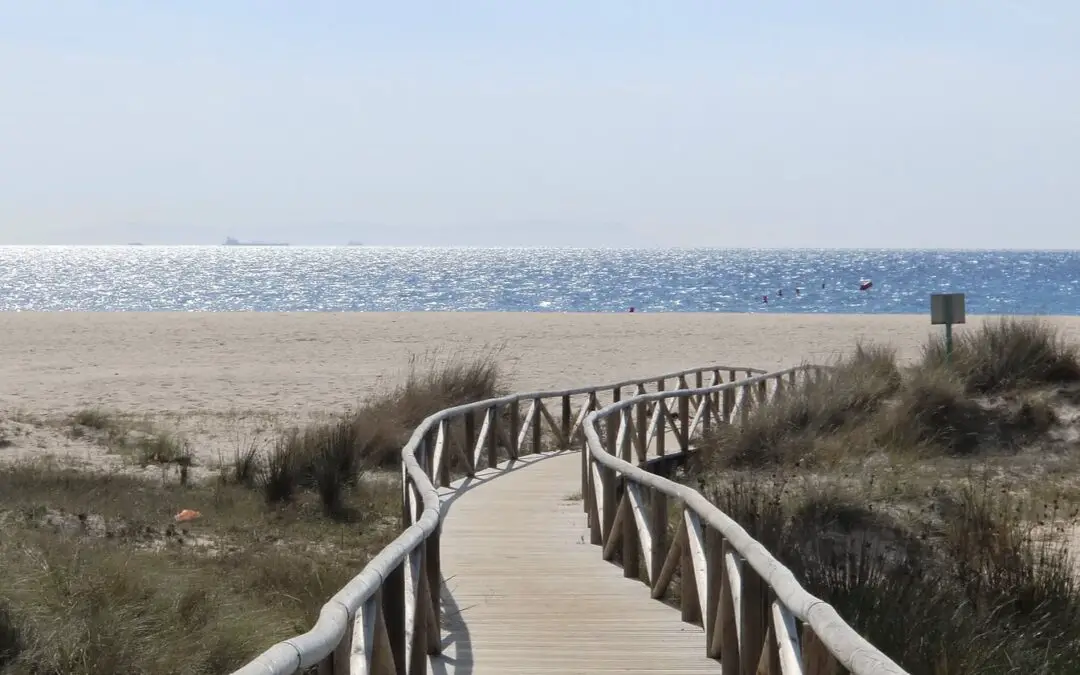Estepona enjoys 22 kilometers of beaches with an enviable wealth, but if it is not enough for you, in this article you will know up to 10 neighboring municipalities that also enjoy the good fortune of having sea.
In each locality, you will find a generic explanation and the places you can’t miss: what you would find in a normal tourist guide. But we wanted to go a step further (and we may have gone a step too far).
We wanted to give it a more scathing touch by completing the definition of our 10 beach towns on the Costa del Sol with comments between unfortunate, caricatured and stereotypical, those you hear on the street but only read on twitter. Let’s see how the experiment turns out… (Jesus, forgive them because they don’t know what they are doing…).
A walk through 10 beach towns on the Costa del Sol:
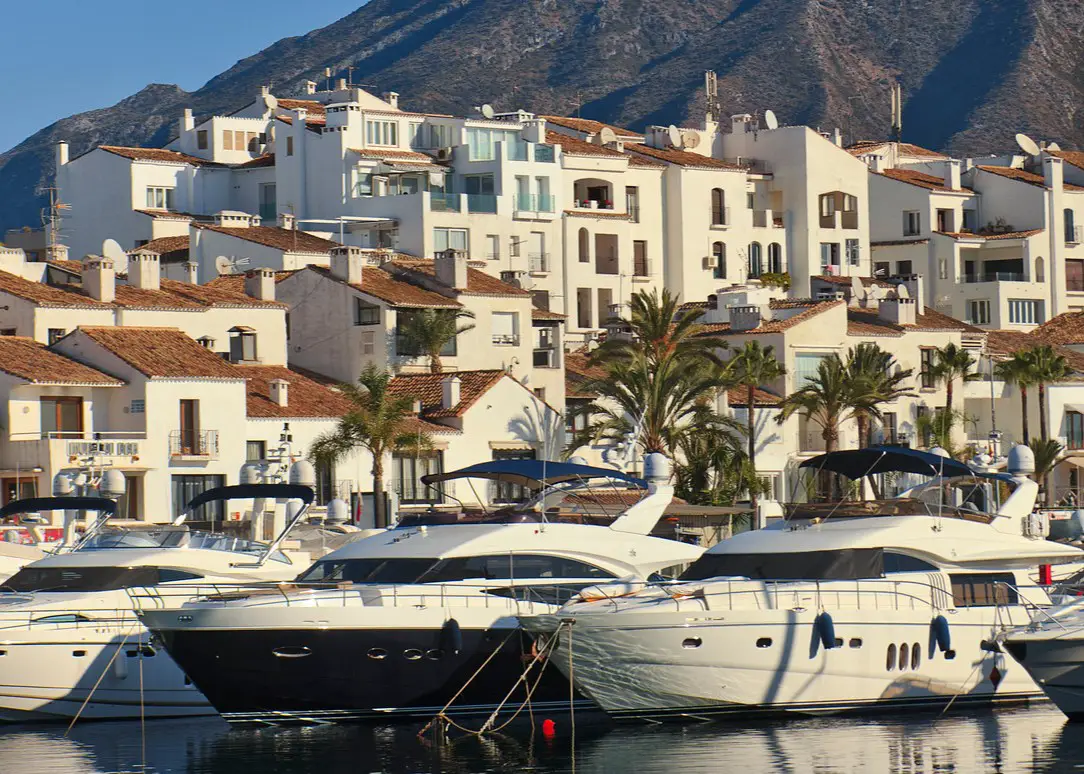
1- Marbella.
Marbella is located on the Mediterranean coast, between Malaga and the Strait of Gibraltar, and at the foot of the Sierra Blanca. Its municipal area covers an area of 117 km², through which the highway and the Mediterranean toll road, the main access routes to the municipality, run.
With a population of 150,725 inhabitants (INE 2022), Marbella is the second most populated city in Malaga and the seventh in Andalusia. It is an important tourist destination on the Costa del Sol thanks to its climate and infrastructure. It also has a significant cultural heritage and a variety of cultural events.
What not to miss:
- Stroll through the old town and its charming narrow streets.
- Enjoy the beaches of the city, such as Nagüeles or Cabopino, which are some of the most popular.
- Visit Puerto Banús, one of the most exclusive marinas in Europe.
- Explore the cultural heritage of the city, such as the Parque Arqueológico de las Murallas del Castillo or the Museo del Grabado Español Contemporáneo.
- And if you like partying and nightlife, in Marbella you will find some of the most important discos: Olivia Valere, Pangea…
Unfiltered commentary:
Neighboring municipality closest to our town in the direction of Malaga and the best known of the Costa del Sol. 27 wonderful kilometers of beaches where you can meet a Telecinco celebrity of those who have not quoted a day in his life. Its most important seaside resort is Puerto Banús with its sheikhs’ yachts, Ferraris and posh stores. It looks like a haunted house, it’s full of ghosts. Its most important beach is Playa del Cable, located near the town of Marbella, but not as crowded as those in the center of town.
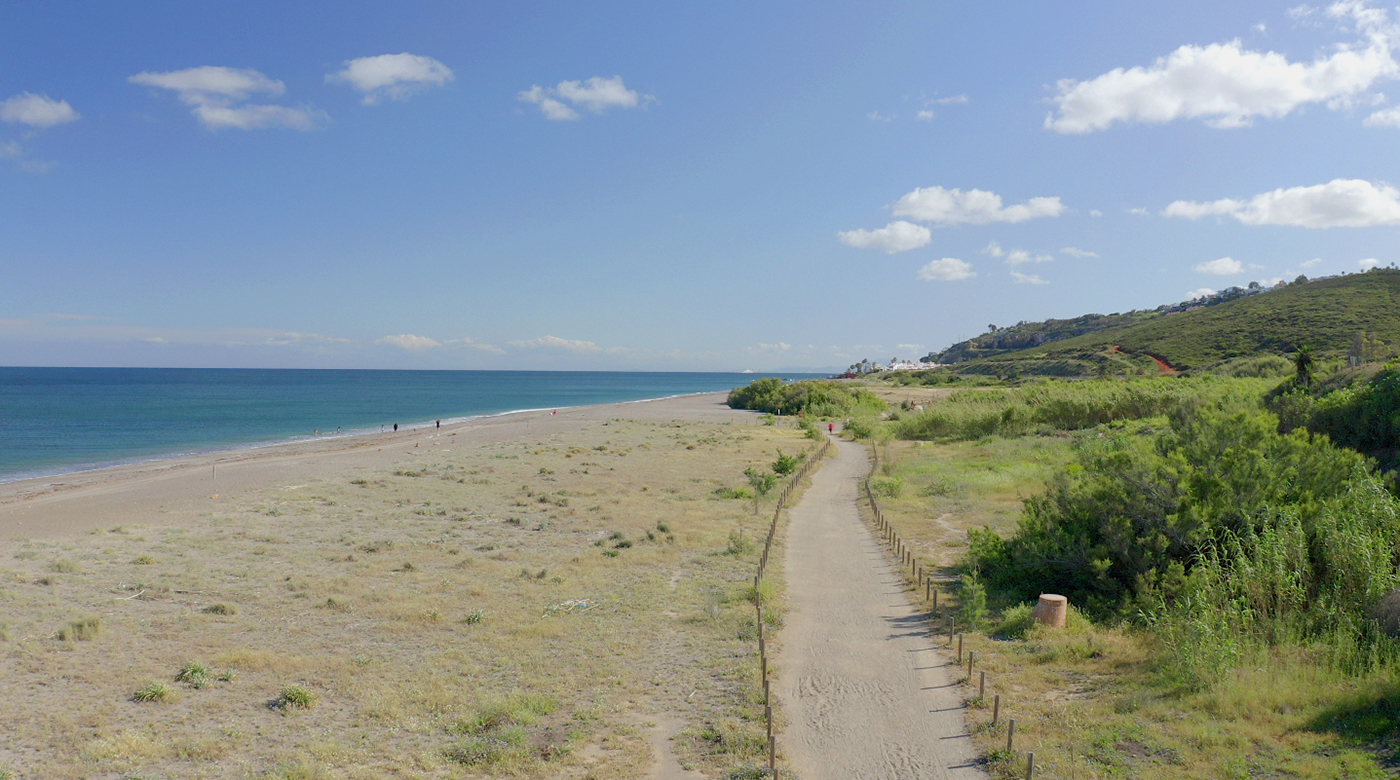
2- Manilva.
Manilva is a municipality in the province of Malaga located in the extreme southwest, connecting the Costa del Sol and the Campo de Gibraltar. With a surface area of 35.30 km², it has an altitude of approximately 128 meters above sea level and an average temperature of 18ºC.
If you want a variety of beaches, Manilva is undoubtedly the best option. Located on the border with the province of Cadiz, Manilva’s coastline stretches from northeast to southwest, in a 7.8 km line that goes from rocky coves to sandy beaches.
What not to miss:
- El Castillo de la Duquesa: this 18th century medieval fortification is located in Puerto de la Duquesa and has an impressive viewpoint overlooking the Mediterranean Sea.
- Torre de Chullera, a fortification that has guarded the coast since the 15th century.
- Church of San Luis de Sabinillas: a sample of the rich history of the region.
Unfiltered commentary:
It is the last municipality in the province of Malaga towards Cadiz, practically bordering Estepona (do not be angry Casares beach), has eight kilometers of beaches, some pristine and its coastline is the least urbanized and overcrowded of the Costa del Sol. Its large coastal town is Sabinillas, which although it belongs to Manilva, its locals have separatist ambitions and deny it as an invented Catalan republic.
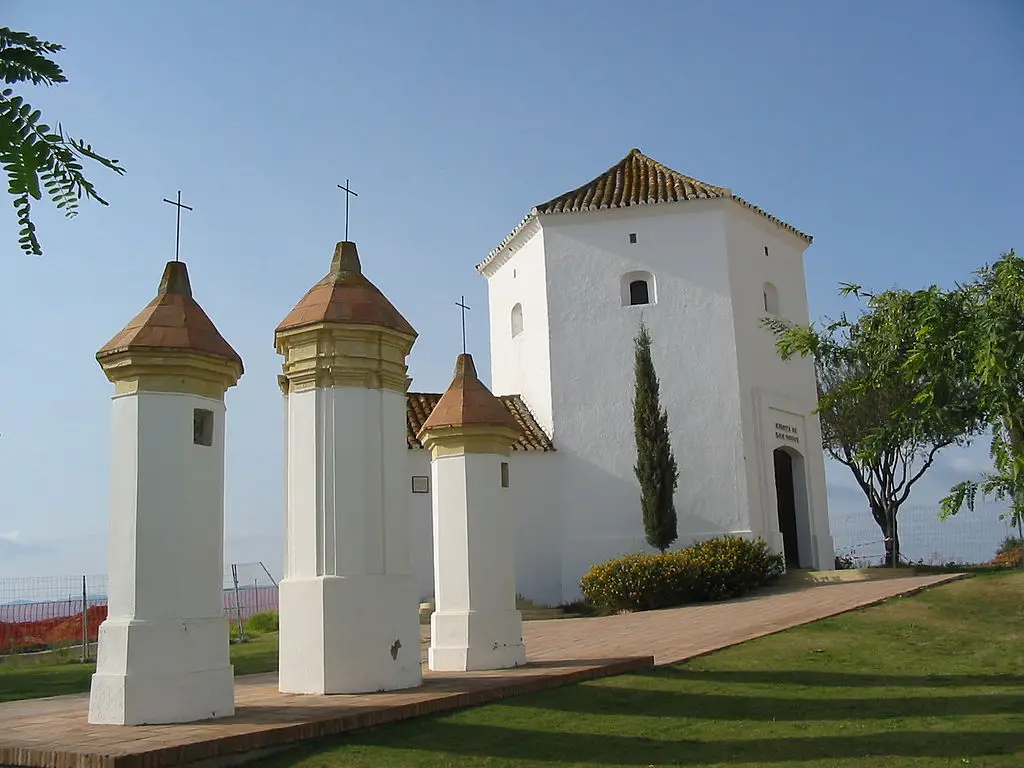
3- San Roque.
San Roque is a town in the southeastern corner of the province of Cadiz with a population of about 30,000 inhabitants. It was founded by Spanish exiles from Gibraltar in 1704. The city retains the symbols and titles of Gibraltar during the Spanish presence, including the flag. It has the largest industrial park in Andalusia. However, it tends to be better known for high end tourism. The Sotogrande luxury urbanization and the Valderrama golf course have hosted important European and world golf championships, such as the 1997 Ryder Cup.
What not to miss:
- The church of Santa María la Coronada: an 18th century church with an impressive bell tower located on the hill of San Roque.
- The Bullring: the oldest in the province of Cadiz, inaugurated in 1853.
- Sotogrande: an exclusive urbanization located on the outskirts, with luxurious homes, golf courses such as Valderrama and a marina.
- Hiking in Los Alcornocales Natural Park: San Roque has a part of this park, which offers routes and breathtaking natural landscapes.
Unfiltered commentary:
First municipality of the province of Cadiz that you find coming from Malaga. At a distance of 24 kilometers from Estepona, Sotogrande stands out, a place par excellence where the wealthy of Spain and part of the foreigner play polo and have brunches with hats in their mansions. It rivals Marbella in glamour but perhaps its inhabitants are less tacky. Torreguadiaro with its beaches and restaurants may be the most recommended site of this municipality with 16 kilometers of coastline.
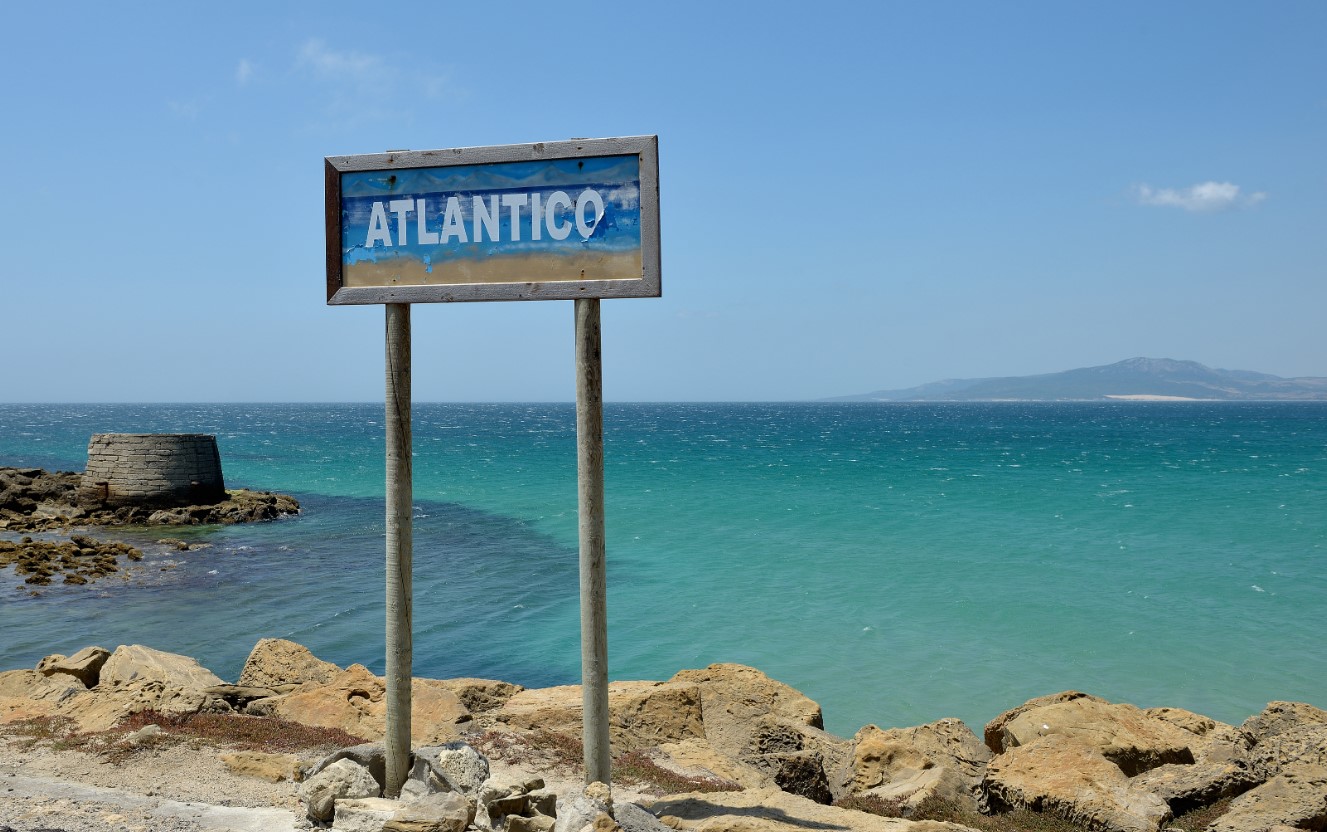
4- Tariff.
Tarifa is a municipality in the province of Cadiz, located in the extreme south of Spain. It has a population of about 18,000 inhabitants and is located at an altitude of only seven meters above sea level. Tarifa is the southernmost point of the Iberian Peninsula and the closest European city to the African continent, only 14 km away from the Moroccan coast. It is also known for its geographical location in the narrowest part of the Gibraltar Channel, which makes it a strategic place for the crossing of waters between the Mediterranean Sea and the Atlantic Ocean.
What not to miss:
- Its beaches: Tarifa is known for its beautiful beaches, such as Playa de los Lances, Playa Chica and Valdevaqueros, among others.
- Water sports: it is one of the best places in the world for kitesurfing, windsurfing and surfing.
- Strolling through the old town: the center of Tarifa is a place full of small cobbled streets and white houses.
- Castillo de Guzmán el Bueno: a medieval fortress built in the tenth century and one of the most emblematic places of the city.
- Mirador del Estrecho: from this point you can admire the views of the Strait of Gibraltar and Africa on the horizon.
Unfiltered commentary:
Located 73 kilometers from Estepona is a natural paradise of white beaches and bohemian atmosphere, being the favorite place for surfers in the south of the peninsula. Due to its incessant wind there is no better place nearby to practice water sports. If the wind blows, don’t even look at its beaches, the sand will stick to your skin like your partner’s reproaches. Bolonia and Valdevaqueros are the two best known of its 35 kilometers of wonderful beaches.

5- The Line.
La Línea de la Concepción is a municipality located in the south of the province of Cádiz. It is part of the region of Campo de Gibraltar and sits on the isthmus that connects the Rock of Gibraltar with the coast, on the eastern flank of the Bay of Algeciras, between Sierra Carbonera and the Rock.
During the conquest of the Nasrid Kingdom of Granada by the Crown of Castile in the 15th century, the area that today is the municipality of La Línea de la Concepción was part of the municipality of Gibraltar, in the Kingdom of Seville. This continued until the English invasion in the early 18th century.
What not to miss:
- The historic center, with the Church Square and the Church of the Immaculate Conception.
- The Levante Beach, especially its many bars and beach bars.
- Castillo de San Felipe, an 18th century fortress with impressive views of the bay of Algeciras and Gibraltar.
- The bunkers of La Línea, almost 500 posts that Franco ordered to be built to defend the Strait of Gibraltar.
Unfiltered commentary:
Village with a bad reputation, but interesting to visit if you are in the area. It is not as unsafe as it is portrayed on television and its seafood cuisine is more than recommendable. At 42 kilometers by road from Estepona, it has white sand beaches and a rock governed by the English, but belonging to the Linenses.

6- Algeciras.
Algeciras is a city in the province of Cadiz, located in the Bay of Algeciras on the Strait of Gibraltar. It has a population of more than 120,000 inhabitants and an economy based on its port, one of the most important in Spain.
The city has a long history dating back to Roman times and was refounded by the Muslims in the 8th century. Algeciras has participated in several of the most important events in the history of Spain and is today one of the main port cities of the Mediterranean.
What not to miss:
- The port of Algeciras, one of the most important in Spain and the Mediterranean. It is a lively place where you can see the port activity and take a ferry to Morocco.
- Plaza Alta: The heart of the historic center of Algeciras. The church of Nuestra Señora de la Palma is located here.
- The Wall: A vestige of the city’s history. This wall was built in the 13th century and is the oldest monument in Algeciras.
- El Mirador del Estrecho: A must to enjoy a breathtaking view of the Strait of Gibraltar and the mountains of Morocco. It is located in Maria Cristina Park and is the perfect place to watch the sunset.
Unfiltered commentary:
Capital of the Campo de Gibraltar, is more a city than a town, located between La Linea and Tarifa, has a colossal seaport that enters the top 10 world ports of goods. Getares Beach, surrounded by vegetation and spectacular scenery, stands out among its coasts.
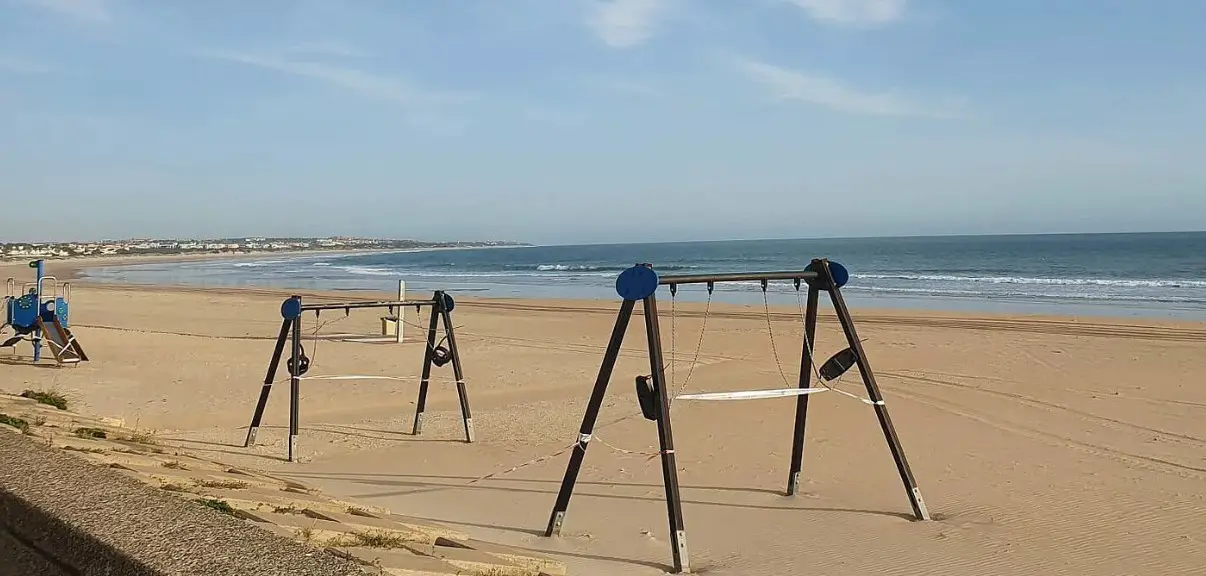
7- Chiclana.
The city of Chiclana de la Frontera is located in the south of Andalusia and stands out for its beautiful beaches and its historical and cultural heritage.
What not to miss:
- La Barrosa Beach: an impressive beach of more than 8 kilometers long.
- Sancti Petri Castle: a fortress built in the 18th century to defend the coast from pirate attacks.
- The Church of San Juan Bautista: a temple with an impressive bell tower, considered a cultural asset since 1975.
- La Ermita de Santa Ana: a small chapel located in the historic center of the city.
- La Ruta de los Molinos: a tour of the windmills located in the natural park of the marshes of Sancti Petri.
Unfiltered commentary:
It is a municipality of Cadiz an hour and a half drive from Estepona that can boast along with its neighboring towns such as Zahara de los Atunes or Conil of having the best white sand beaches in Europe. They can be perfectly compared to those of the Caribbean. I put Chiclana and not Caños de Meca or another of the surroundings because the beaches of La Barrosa with the castle of Sancti Petri in the background are really an idyllic landscape.
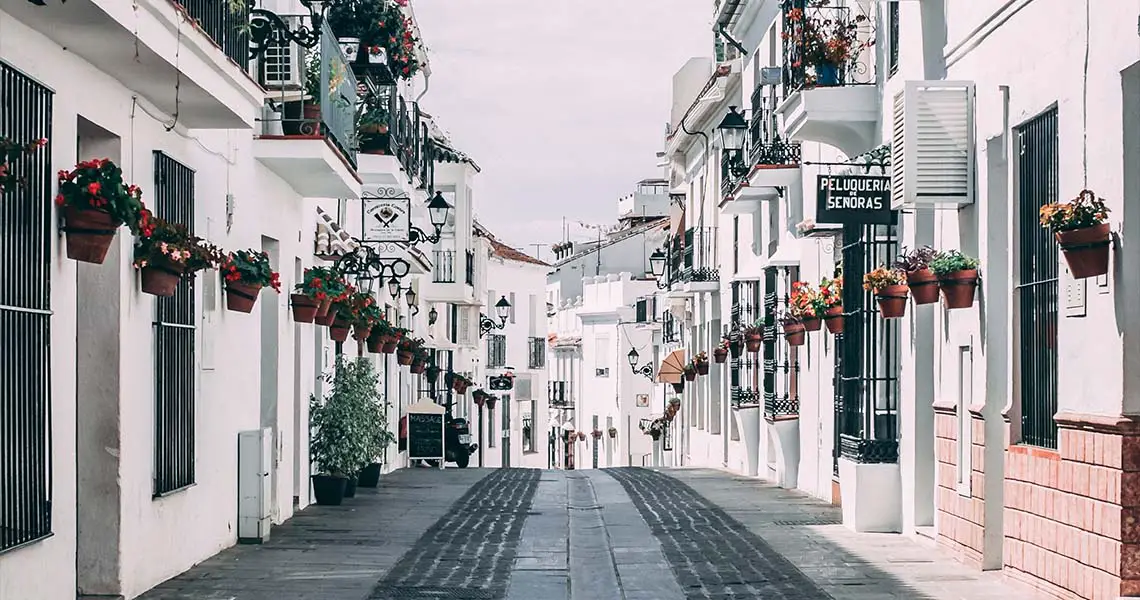
8- La Cala de Mijas.
La Cala de Mijas, belonging to the municipality of Mijas in the province of Malaga, stretches for less than a kilometer, except for some rocky areas that separate it from Fuengirola to the east and Marbella to the west.
With a population of more than 4,000 inhabitants, La Cala de Mijas is mainly dedicated to sun and beach tourism and the residential sector. However, it has some municipal services, such as health centers, schools, a cultural center and a library that are located in the town and are intended for all residents of the area.
What not to miss:
– Calahonda Beach with its four kilometers long, El Bombo Beach, Chaparral Beach or Butibamba Beach.
– Its historic center of white houses of Arab origin is an attraction for any visitor.
– The oval bullring, unique in Spain. In Estepona we have another asymmetrical one which is not bad either.
Unfiltered commentary:
It is the coastal area of the municipality of Mijas, a white village just over half an hour from Estepona and a few kilometers from the beach. It has an undeniable rural charm but perhaps excessively exploited, its donkey rides and its route evokes a tourist theme park, all crammed with franchises and places to spend your money. Located between Marbella and Fuengirola, it can be said to be in the middle of the Costa del Sol.

9- Torremolinos.
Torremolinos is a municipality with an altitude of 49 meters above sea level and an area of 20 square kilometers. It has a population of about 70,000 inhabitants, of which almost a quarter are foreigners. It is known for being one of the main sun and beach tourist destinations in Spain since the 1950s.
During the 60’s and 70’s, the influx of foreign tourists and celebrities created a liberal and cosmopolitan atmosphere, becoming one of the most important musical and nightlife references in Spain.
What not to miss:
– Promenade: Strolling along the coastal path of Torremolinos is a perfect plan to enjoy the sea and the sea breeze.
– Casa de los Navajas: A small palace with neo-Mudejar architecture, surrounded by gardens, which currently serves as a cultural and events center.
– Battery Park: A park with breathtaking views of the sea, where you can enjoy a wide variety of outdoor activities.
– Aqualand Torremolinos: One of the largest water parks on the Costa del Sol, with numerous water attractions for all ages.
Unfiltered commentary:
Emblematic municipality of the Costa del Sol, for many decades it has been full of people on vacation. In the sixties it was famous for the Swedish women, at that time it was possibly the first tourist destination in the country when Spain opened up to foreigners. At a distance of just under an hour from Estepona is the last village before reaching Malaga, perhaps its urbanism is old but the village maintains the character of yesteryear. If you like people of the same sex you will be like a fish in water there, it is the “chueca malagueño”.

10- Nerja.
Nerja is a municipality in the Axarquia region in the province of Malaga, Spain. With a long history dating back to Muslim times, its name comes from the Arabic word “Narixa” meaning “abundant source”.
It is famous for the Nerja Cave, where the oldest rock art images in the world were found, more than 40,000 years old. Its mild climate throughout the year allows the cultivation of subtropical fruits such as cherimoya, avocado and mango.
What not to miss:
– The Nerja Caves, a set of caverns with stalactites and stalagmites of surprising shapes.
– The Balcony of Europe, a spectacular viewpoint with panoramic views of the Mediterranean.
– Burriana beach, a large beach with a wide range of restaurants and water activities. The beaches of Calahonda, El Chorrillo and Carabeo, among others, are not bad either.
Unfiltered commentary:
Beautiful village with a thousand charms, perhaps a little far from Estepona, is an hour and a half drive, and passing Malaga, but worth the visit. The cave is brutal, it is a trip to prehistoric times. Its gastronomy may be similar to the rest of the province, but with lower prices. It has 13 kilometers of beaches and is famous along with its neighbor Maro for its sea floor, both being the destination par excellence for diving enthusiasts. I can not fail to say that Verano Azul was filmed here and the death of Chanquete took place here, although I have doubts that it contributes much with these last data.

